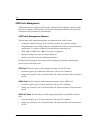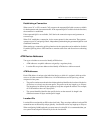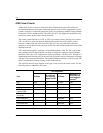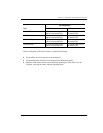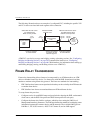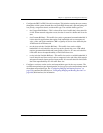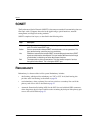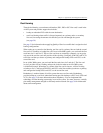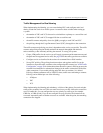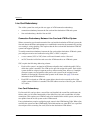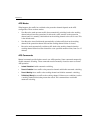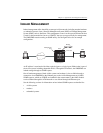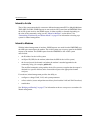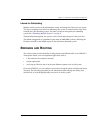
Redundancy
30 Avidia System Configuration and Management User Manual
Backup ATM PVCs
ATM service requires the configuration of ATM PVCs which comprise VPCs and VCCs.
VPCs and VCCs are the logical connections over which ATM cells are transmitted; these
are referred to as the primary VPCs and VCCs. You can create backup VPCs and VCCs to
which the system can automatically switch in the event that primary VPCs or VCCs fail.
These are referred to as secondary VPCs and VCCs. The secondary VPCs and VCCs are
configured to the second (redundant) line card in the Avidia system. When setting up the backup
VPCs or VCC, you can use the same VPI and VCI values as the primary VPC or VCC, or you
can use a different VPI and VCI combination. Use a VPI value is required for both a VPC and
a VCC; a VCI value is required for a VCC only.
After the system automatically switches to a backup VPC or VCC, you must manually return
service to the primary VPC or VCC.
Static Load Sharing
The dual homing feature of static load sharing allows you to increase the amount of traffic that
you can send through the system by allowing you to direct traffic to two separate line cards. The
uplink for both line cards (DS1, DS3 and OC3) is from the same ATM source, but the
information that is transmitted may be directed either to the same or to different destination
devices. The line cards can be of the same type (both OC3, for example) or they can be of
different types (an OC3 and a DS3, for example).
Through either the command-line or Web interfaces, you can direct some Avidia system
ATM cross-connections to one of the line cards and then direct other ATM cross-connections
to the second line card. If you also implement card-level redundancy and backup or secondary
VCCs and VPCs, you need to carefully balance loads and manage traffic and QoS to efficiently
use the network and the bandwidth available for each line card.
If one line card fails, the second line card takes over the functionality of the failed line card, and
re-establishes all the connections. This can result in too heavy a traffic load on the second line
card. To handle this, you can configure the recovery priority by traffic type (for example, CBR
first, rt-VBR second).



